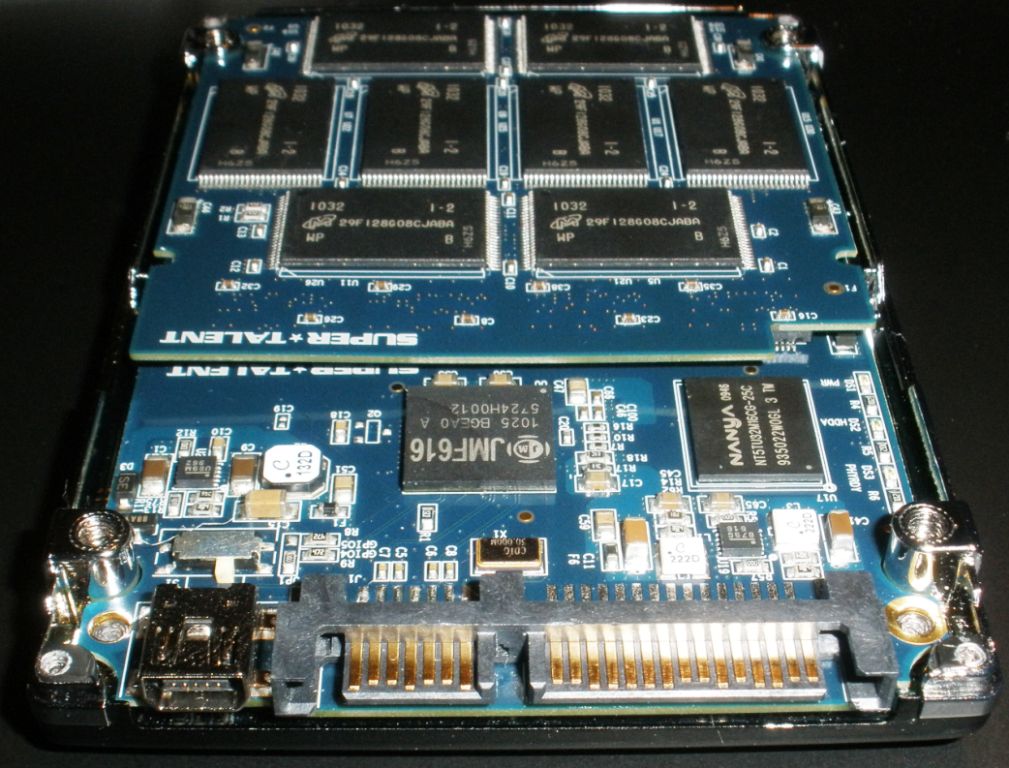It was just a few days ago that the internet was abuzz with news of Super Talents new offering of its UltraDrive MX 480GB SSD which promised a new era in consumer SSD capacities.
The idea of 480GB of SSD property on a single SSD immediately became the driving force to our contacting Super Talent and suggesting a review of this monster drive.
This idea was sidestepped rather quickly with information that there were only 12 prototypes available, each of which was making its rounds through expected hierarchy within the company. We definitely didn’t expect a return telephone call from Peter Carcione, Super Talents Director of Marketing, suggesting that we may be able to have a quick ‘hands on’ with the monster if we considered also taking a look at one of Super Talents smallest and cheapest offerings as well, the Super Talent 16GB VSSD. How could we resist? This review will be our first of two in upcoming days and will focus on the Super Talent UltraDrive 480GB SSD but stay tuned because the VSSD Review is not far behind.
PHYSICAL CHARACTERISTICS
Lets jump right to it by showing you why this drive is so special. They have done what the industry and SSD enthusiasts have been anticipating for some time. This picture shows the Super Talent 480GB SSD circuit board (PCB):
 This SSD is equipped with 512GB of total NAND flash memory chips, the total of which is arrived at through 32 chips of Micron 16GB NAND flash memory. This picture displays how the 29nm flash is situated in a parent/child type relationship where the child pcb contains 8 chips on either side and then the parent pcb also has 8 chips on either side for a total of 32.
This SSD is equipped with 512GB of total NAND flash memory chips, the total of which is arrived at through 32 chips of Micron 16GB NAND flash memory. This picture displays how the 29nm flash is situated in a parent/child type relationship where the child pcb contains 8 chips on either side and then the parent pcb also has 8 chips on either side for a total of 32.
.
.
.
.
.
We would have liked to rip this apart except we think that the bottom pcb is bolted down by two screws on either side in the center area and then the top pcb soldered and assembled on top. Somebody has been doing there homework most obviously. Looking at the board, we also see the JMicron 616 controller as well as an intelligent incorporation of a dual interface with the added mini-usb port connection.
SYSTEM MIGRATION
The mini-USB port is USB 2.0 and provides an excellent alternative to the frustrations many have experienced in migrating their hard drive computer to solid state drive storage. The user simply plugs the SSD into the computer system and , through use of Acronis or Paragon SSD migration software, transfers their computer environment to the SSD. A quick switch of the hard drive for the SSD followed by a reboot is all thats left to experience the amazing difference that solid state drives provide. To describe the difference that an SSD makes, its like the computer knows what key you are about to press, or what program you are about to start, before you hit the key.
EXTERIOR
.
.
.
.
.
.
.
.
.
Exterior packaging of the Super Talent SSD consists of a strong cardboard exterior with foam encasing the SSD inside. This package came with the standard SSD User Manual and 4 screws for fastening the drive if necessary on a desktop system.
SPECIFICATIONS
The drive utilized for the review is a 480GB mlc SSD which has listed performance specifications of 240MB/s read and 180MB/s write. Its model number is FTM48MX25H. As performance specifications differ with respect to capacity, full specifications are detailed as such:
Pg1 – Physical Characteristics, Migration and Specifications
Pg2 – Protocol and Initial Tests
Pg3 – Crystal, ATTO and HDTach BenchMarks
 The SSD Review The Worlds Dedicated SSD Education and Review Resource |
The SSD Review The Worlds Dedicated SSD Education and Review Resource | 

Asd’s are great and much better than hdd’s in a lot of ways as well as
being the best upgrade you can make on your computer. Unfortunately ssd’s
are also much more expensive than hdd’s and only a few people can afford
to have descent amount of ssd storage . Hopefully within a few years with all the ssd competition out there 1tb ssd’s will cost no more than $300.